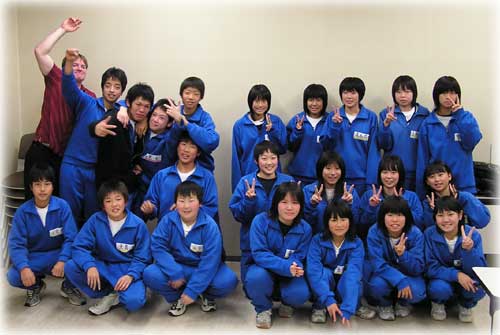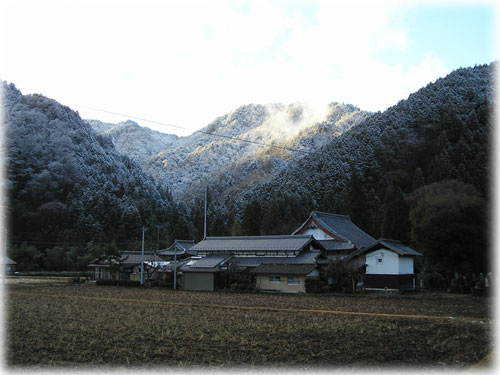 by Daniel Patton February 15, 2005

The first big obstacle that I struggled with was the Japanese word order. It is almost completely opposite that of English, with the verb almost always coming at the end of the phrase and the articles after the words they modify. If you want to form a well worded Japanese sentence, just imagine the English equivalent and say it backwards. For example, instead of saying 'the cat is in the house' say 'cat the house in is' (neko ga ie no naka ni imasu) and 'the moon rose over the mountains' would be 'mountains over moon the rose' (yama no ue ni tsuki ga demashita). The next difficulty I encountered was the tendency for Japanese words to 'all sound the same', especially to an ear tuned to hear English. This is a common problem for people learning a new language, but with Japanese it is compounded because, in fact, there are much fewer possible sound combinations than in English. And due to the different timing of Japanese, it is moraic instead of syllabic, what seem to our ears extremely subtle differences in pronunciation can make the difference between two very different words. For example, biru means 'building' while biiru means 'beer'. The i sound in biiru is held out infinitesimally longer than in biru. 
The Japanese written system consists of not one, but four alphabets. The first three, hiragana, katakana, and romaji, are relatively easy to learn as they are compact and the letters refer to single sounds. Actually, we all already know romaji, it is the alphabet we use. Romaji is very common in Japan. You see it on billboards, t-shirts, and every computer keyboard. The fourth 'alphabet', kanji, isn't really an alphabet but a quasi-hieroglyphic writing system adopted from China about 1,500 years ago. It is amazingly prolific. The Japanese government has issued a list of approximately 2,000 kanji symbols to be used in official documents, but if you want to read technical papers you need to know upwards of 5,000 and total kanji lists sometimes exceed 30,000. This is an enormous amount of memorization to anyone hoping to learn to read kanji and it is even tougher than it seems at first glance because most kanji have at least two (often many more) pronunciations. Chinese is a tonal language; the meaning of words differs depending on pitch. When the Japanese adopted Chinese symbols they also adopted vast numbers of words. Since Japanese is not tonal, many words that sounded different in Chinese sound the same. Thus, the five different meanings for saku (each having a different kanji, by the way). Needless to say it is very difficult to learn to read Japanese. I recently heard a story about an American who was determined to learn to read kanji. After a few years of study he called up a friend and proudly proclaimed he'd mastered his 1000th kanji and could now read the front page of a Tokyo newspaperin only an hour and a half! There are also a few instances where Japanese is simpler than English. There is almost no use to the plural, as it is deduced from context. The future tense in nonexistent as well. In some cases where English is rather verbose, Japanese is concise. For example, 'the bread that I bought yesterday' is 'yesterday bought bread' kinoo katta pan and 'the man who is wearing the red shirt' is 'red shirt wearing man' akai shatsu o kitte otoko. Japanese also has a great wealth of onomatopoetic words which tend to greatly reduce the amount of words needed to make a point. For example bashibashi is 'the sound of smacking someone on the head' and burabura is 'the sound a drunk person makes as they swagger down the street'. One phrase in particular, onegai shimasu, I find interesting. It's impossible to accurately translate but might mean something like 'I humbly place myself in your care please accept me'. Onegai shimasu is used constantly, I probably hear it 20 times a day. It is actually rather indicative of Japanese culture as a wholebut that is an entirely different article. I hope this piqued some interest
in learning Japanese. Go for it and then come visit our sister
city, Kanayama.
|